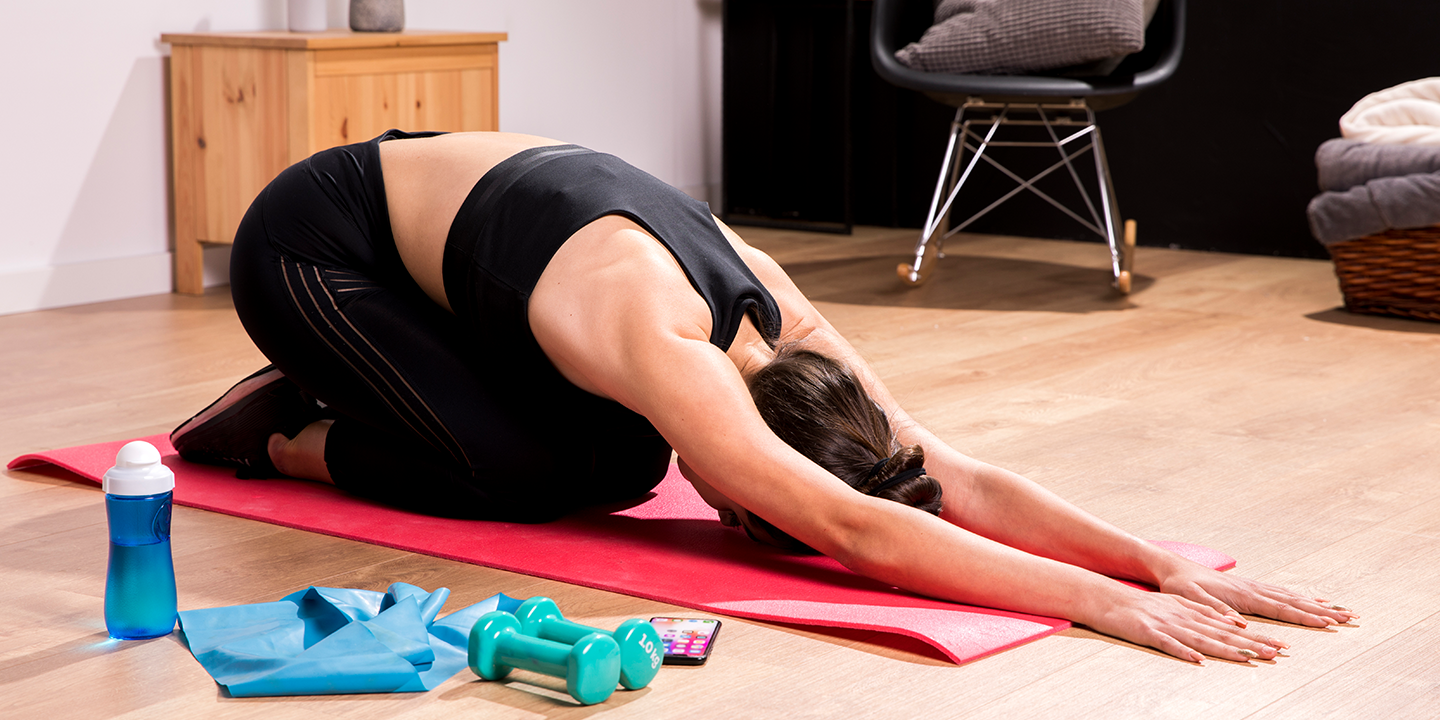
- December 20, 2022
- Queens
- 0
Practicing prenatal yoga, under the supervision of a trainer can be a very useful way to prepare your body for childbirth and the stresses of being a new parent. You’ll be able to improve your circulation, relax your muscles, and reduce the stress and anxiety associated with pregnancy.
You can also improve your posture and increase your strength. It is recommended that you practice this form of exercise at least twice a week. It can also lower your blood pressure and stress levels. It is especially beneficial during the first trimester.
You can also do partner yoga. This is a great way to build a connection with your partner and the baby. It is a great way to feel strong and powerful while also honoring your pregnancy.
However, you need to be careful when starting any yoga regimen during pregnancy. You need to follow proper yoga guidelines and consult a doctor first. Apart from that, you need to avoid certain yoga poses. You should also stop practicing immediately if you feel pain, are nauseated, light-headed, dehydrated, or experience unusual vaginal discharge.
In this article, we are going to discuss 9 effective yoga asanas for pregnant women.
What Is Prenatal Yoga?
Prenatal yoga is a form of exercise that you practice during pregnancy to encourage breathing, stretching, and mental peace. Practicing yoga during pregnancy offers a variety of benefits for the body and mind of the expecting mother as she gets used to the changes in her body.
In addition to helping you stay healthy, it can also boost your mood and happiness, improve your sleep, and ease your body through childbirth. You can begin prenatal yoga whenever you want. But you should always speak to your medical provider before you start any new exercise or activity.
Prenatal yoga can help you prepare for childbirth and can increase your strength, flexibility, and endurance. The yoga practice can also soothe nausea and headaches. You can also learn specific exercises, such as breathing, that will help you during labor.
While there are many physical and emotional benefits of yoga for pregnant women, it’s important to know the risks of participating in certain poses. Some yoga positions can be harmful to both you and your baby. The most important thing is to be sure you’re doing what’s best for you.
In this Article
What Are The Benefits Of Prenatal Yoga?
Using prenatal yoga to get ready for your baby’s arrival is a great way to improve your health and well-being. From getting rid of common pregnancy complaints to toning and strengthening your muscles, it can help you get through the whole process.
- Supports Your Changing Body
Practicing prenatal yoga during pregnancy can improve your overall health and reduce the symptoms of pregnancy. It also helps you to develop a strong support system. Yoga can help you relax, improve sleep and reduce stress. In addition, it can increase your flexibility and strengthen your core muscles. It will prepare your body for childbirth.
- Promotes Connection With Your Baby
Practicing yoga during pregnancy can make you feel stronger, more relaxed and more in tune with your body. It can also help you bond with your baby. You may find that you can better cope with the symptoms of postpartum depression. Yoga can help you deal with anxiety and depression and can help you feel more connected to your baby.
- Provides Relief from Common Pregnancy Complaints
Whether you are experiencing back pain, constipation, or fatigue, yoga is a great way to relieve some of these issues. Prenatal yoga can also help reduce anxiety and improve sleep. It can be a good outlet for stress and allows you to connect with your baby. If you have never done yoga before, you should start with a class specifically designed for pregnant women.
- Gives You a Healthier Pregnancy
Practicing yoga during pregnancy can help a woman cope with the physical and emotional changes that she is going through. It also helps to keep her healthy during pregnancy. In addition to helping her prepare for childbirth, prenatal yoga can reduce the amount of stress and anxiety that a pregnant woman experiences.
- Reduces Stress and Anxiety
Using prenatal yoga to reduce stress and anxiety may help improve the health of pregnant women. This is a practice that involves deep breathing, relaxation techniques, and physical postures. It has been found to reduce stress and depression, especially in high-risk pregnant women.
- Improves Sleep
During pregnancy, most women find it hard to get a good night’s sleep. The hormonal changes and the shift in the center of gravity can make it difficult to get a good rest. However, a few practices can help pregnant women improve their sleep. These include yoga, which can be beneficial both for pregnant women and their infants.
Special Safety Guidelines for Prenatal Yoga
Before you start prenatal yoga, you need to follow some safety guidelines. These tips include avoiding certain poses, pacing yourself, and talking to your healthcare provider about your goals.
- Talk To Your Health Care Provider
Taking prenatal yoga can be a great way to ease some of the discomforts of pregnancy. It can also reduce stress and depression. You should be careful to follow safety guidelines, however. Some yoga poses are not recommended for pregnant women. You should always consult with your healthcare provider before trying any new exercise or activity.
- Set Realistic Goals
Setting realistic goals for yourself is the key to achieving a healthier and fitter you. If you are a yogi-to-be, chances are you can find an instructor that can tailor a class to your specific needs. In fact, most forms of yoga are fairly safe for pregnant women, though there are a few do’s and don’ts.
- Stay Cool And Hydrated
Keeping yourself cool and hydrated when doing prenatal yoga is important for you and your baby’s health. Overheating can result in serious complications. Fortunately, there are some simple ways to stay cool and stay hydrated. The most obvious thing to do is to drink plenty of water. Keeping a bottle of water handy will let you get small amounts of fluid throughout the day.
- Avoid Certain Postures
During pregnancy, there are certain yoga poses you should avoid. Fortunately, there are also several poses you can do safely before getting started, though be sure to consult with your doctor or physical therapist. To get the most out of yoga during your pregnancy, you need to pay close attention to your body. You should be aware of signs and symptoms that indicate when you should stop a particular pose.
- Don’t Overdo It
Practicing prenatal yoga can help pregnant women stay in shape and reduce the risks of pregnancy-related illnesses, but it is important to follow proper safety guidelines. It is also best to have someone to help you do the exercises. Avoid doing poses that are uncomfortable or beyond your ability. You should also limit the length of your stretches.
9 Effective Yoga Asanas for Pregnant Woman
Here are some of the best and most effective yoga asanas for pregnant women. These asanas can also provide significant benefits for your baby.
- Ankle-To-Knee Pose (Agnistambhasana)
Agnistambhasana, or the ankle-to-knee pose, is a yoga asana that stretches your hips and opens your lower back. The name is derived from the Sanskrit words Agni and bhasana. The pose is a deep hip opener that requires intelligent body movements and breath awareness. Practicing this yoga asana while pregnant is a great way to relieve pain and stress in your back and hips. It can also help you feel more relaxed and optimistic. This stretch is known to improve sciatica and is a good exercise to get started with. If you have a painful knee, you should avoid doing this pose. It is one of the best pregnancy asanas.
- Pigeon Pose (Eka Pada Kapotasana)
Taking the pigeon pose is great for increasing flexibility in your hips and hamstrings. It also helps to improve the function of your abdominal organs. It can be a good way to release stress. The pigeon pose can be modified to suit your individual needs. For example, it can be used to help ease knee pain. You can adjust the angle of the front leg to bring the knee closer to the mat. The pigeon pose can help relieve lower back pain.
- Standing Forward Bend (Uttanasana)
The Uttanasana is a yoga pose that helps strengthen your muscles and relax your mind. It also improves your body’s range of motion and flexibility. The pose is a good way to reduce stress and tension in the shoulders and neck. It also improves blood circulation. While this is a great pose, it can be difficult to achieve. It requires careful guidance and a lot of patience. You should always consult your physician before practicing this pose. Standing Forward Bend can be a great warm-up for inversions. It is also a restorative pose that stretches your back and hamstrings. During pregnancy, it is important to avoid excessive forward bends.
- Seated Side Bent (Sukhasana)
Taking time for a seated side bend yoga pose is a great way to relax the body and improve your posture. It helps to stretch the hips, spine, and chest. It also opens up the heart, releases stress, and stimulates the lymphatic system. Another benefit of a seated side bend is its lateral twist. It stretches your obliques and psoas muscles. It may also help to open your hips. Pregnant women should avoid doing any sort of twists or moves that compress the knees.
- Wide Knee Child’s Pose (Balasana)
Performing a wide knee child’s pose balasana for a pregnant woman can help relieve back pain and provide a great stretch to the hamstrings, hips, and ankles. It is also a very relaxing and restorative pose for pregnancy. Before you begin, make sure that you are comfortable in a sitting position. If you are not, try elevating your feet. You can place a blanket behind your knees for extra support. You can also use a pillow under your hips. If you are experiencing neck or head pain, you can place a block under your head.
- Low Lunge Twist Pose (Parivrtta Sanchal-Asana)
The low lunge twist pose is a gentle hip opener that will soothe your muscles. It is also a good stretch for your shoulders and pelvis. It is recommended to perform this pose every morning and evening. You can also include it in flow yoga sequences. This is a good exercise to stretch your lower body and increase your stamina. It is ideal for tight hips. Another yoga exercise that can be useful during pregnancy is the supported backbend.
- Cat-Cow Pose (Marjaryasana – Bitilasana)
During pregnancy, the cat-cow pose is considered to be the best position for the baby. It’s also a great prenatal exercise to relieve stress. In addition, it stretches the spine and neck and clears energy blockages. A cat-cow pose is a form of yoga that focuses on the connection between breath and movement. This synchronization helps build strength and awareness. It’s especially helpful for those with neck injuries.
- Butterfly Position
The Butterfly position is a favorite for pregnant women. It helps increase circulation, relieve tightness in the hips and groin areas, and strengthen the pelvic floor muscles. This exercise also helps reduce abdominal pain. You can use props, such as a bolster when you perform this exercise. A lot of yoga postures are safe for pregnant women, but you should always consult a doctor before beginning a yoga practice.
- Squat Variation with a Block (Mālāsana)
The Malasana pose is a great way to stretch your hips and shoulders. It is also good for pregnant women. It helps with uterine contractions, as it will relieve pressure in the pelvis area. The squat is a great exercise that is often overlooked. It works your muscles all over the body. You will notice a difference in your balance and posture once you have mastered the art. It can be difficult to get to the ground, however, and you should take your time.
Conclusion
Practicing yoga during pregnancy is a great way to get in shape and prepare your body for labor and delivery. You can also use the poses to alleviate stress and improve flexibility. If you plan on doing prenatal yoga, be sure to talk to your doctor before starting a program. While prenatal yoga is safe, some poses can lead to complications. So, it is best to follow proper yoga guidelines or hire a yoga instructor to stay safe.
Prenatal yoga can help you with a healthier pregnancy. However, before you start yoga, it is best to consult a gynecologist or an expert. If you are pregnant, you can schedule an appointment at Queen’s Gynecology for the best pregnancy-related advice. Our expert doctors will not only offer you the best tips but also provide complete help and support throughout your pregnancy.
FAQ’s
During pregnancy, you’ll want to be sure you are doing yoga poses that will be both safe and effective. Some of the best pregnancy yoga poses are standing side stretch, bound angle pose, yoga squat, easy pose, and corpse pose.
If you have never done yoga before, the best time to start during pregnancy is in the second trimester. You can start after 14 weeks to enjoy the various health benefits of prenatal yoga.
There are certain yoga positions that can help you conceive. Some of them are extended puppy pose, legs up the wall, reclining bound angle pose, Sufi rolls, back rolls, etc. However, it is best to consult a fertility specialist if you are trying to get pregnant.

























































































































































































